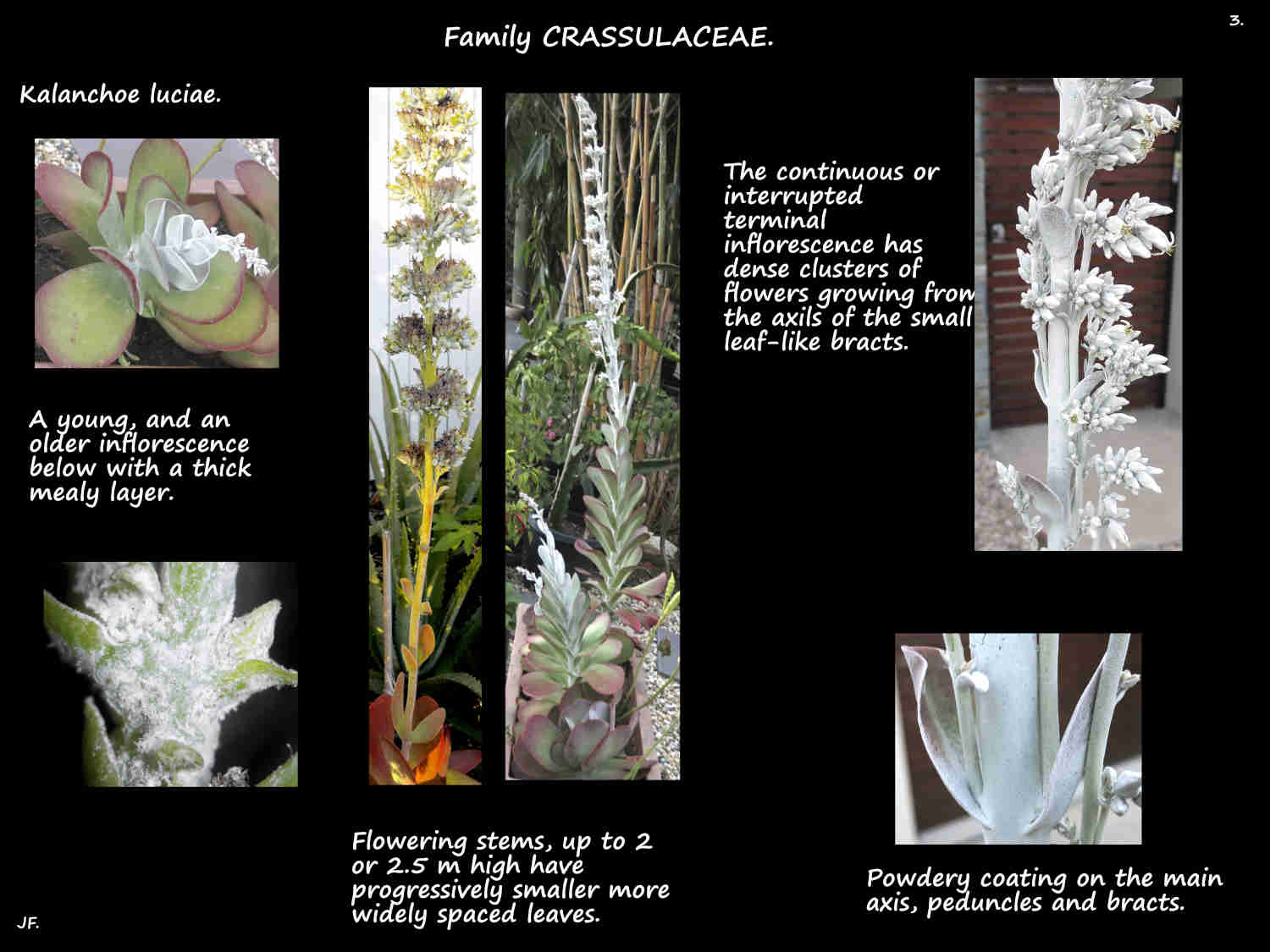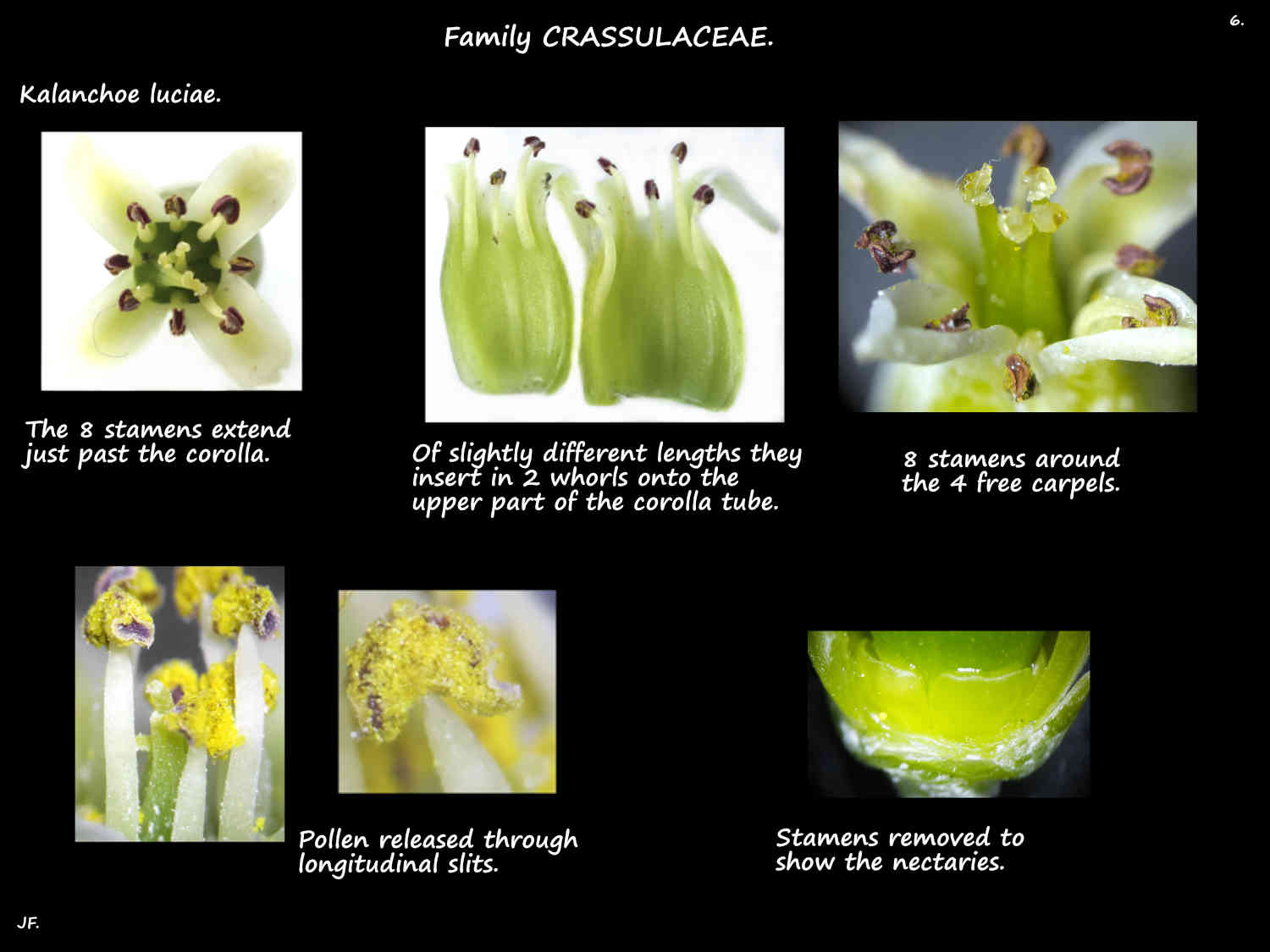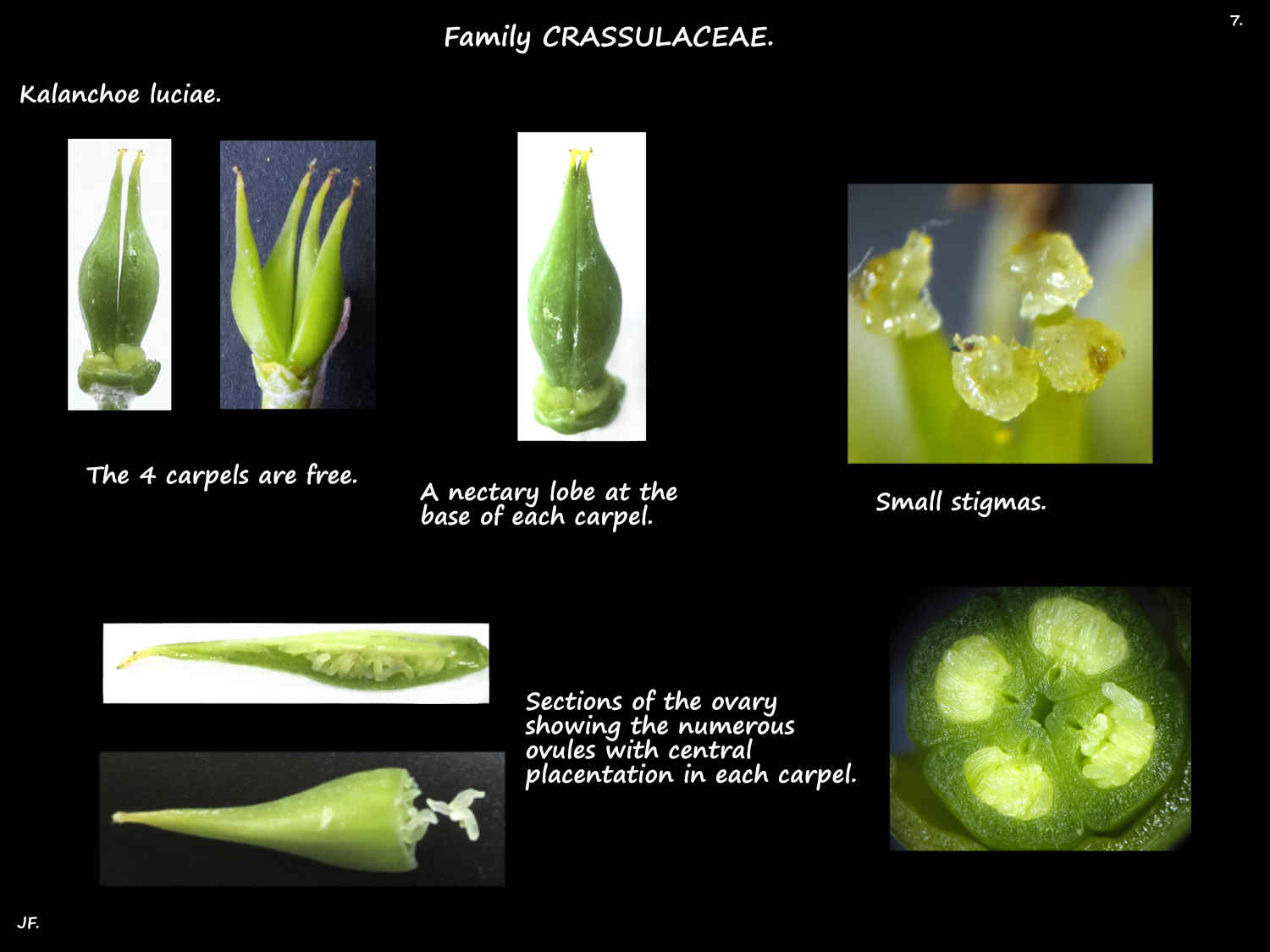Kalanchoe luciae.
Known as the Flapjack plant or Red Pancakes it shares the name Paddle Plant with other species.
Native to Africa it is in Family Crassulaceae > Subfamily Sedoideae > Tribe Kalanchoeae.
The are very commonly identified as K. thrysifolia.
The succulent, biennial plants can be solitary or form clumps.
The basal pseudo-rosettes produce a flowering stem up to 2.5 m high in the second year then die after flowering.
They have no hairs but are covered in a dry, white powdery substance (mealy) that rubs off over time.
The succulent leaves, with no petiole are opposite and decussate (in 4 ranks).
They can be divided into 3 sections.
At the base are dense large flat leaves with adjacent pairs only a few mms apart forming a pseudo-rosette.
The bases of opposing pairs clasp the stem and may meet around it.
Up to 25 cm long they can be almost round, obovate or spatula-shaped.
Leaves on the lower part of the flowering stem are up to around 15 cm apart.
Similar in shape to the basal leaves they are around 10 cm long.
The upper leaves are around 2 to 3 cm long.
All the leaves are green but the powdery coating makes the young ones white.
Older leaves exposed to the sun develop a red edge and sometimes the whole leaf becomes bright red.
In the second year the erect flowering stem, up to 2 or 2.5 m high appears.
Dense clusters of flowers, on a short peduncle grow from the axils of the opposite small bract-like leaves along the upper part of the stem.
These clusters can form a continuous or interrupted inflorescence up to around 40 cm long and 10 cm wide.
They are describes as branched scorpiod cymes.
The main axis continues to grow and lateral cymose subaxes grow below the tip.
Cymes have the terminal flower on the branches opening first.
Scorpioid cymes are coiled up like a scorpion’s tail.
Flowers are on a pedicel up to 1 cm long.
The calyx tube, around 5 mm long has 4 lobes with a blunt or pointed tip.
The 4-angled, urn-shaped corolla has a tube up to 10 mm long that narrows at the top (the throat).
The 4 narrow triangular lobes, around 6 mm long have an almost pointed tip that curls back.
The calyx and corolla are whitish or a pale yellowish green.
The inflorecence stem, branches, peduncles, pedicels and the outer surface of the calyx and corolla are mealy.
The basal rosette dies after flowering to be replaced by offsets.
The 8 stamens are inserted in 2 whorls at different levels near the top of the corolla tube.
The filaments are around 5 mm long and the anthers 1 mm.
There is a nectary around the base of the ovary.
It can be a continuous ring or square to horizontally oblong lobes (scales).
The superior ovary consists of 4 free carpels each with numerous ovules and a stout tapering style.
The styles up to 3.5 mm long extend past the corolla.
Each carpel can develop into a follicle.
J.F.









